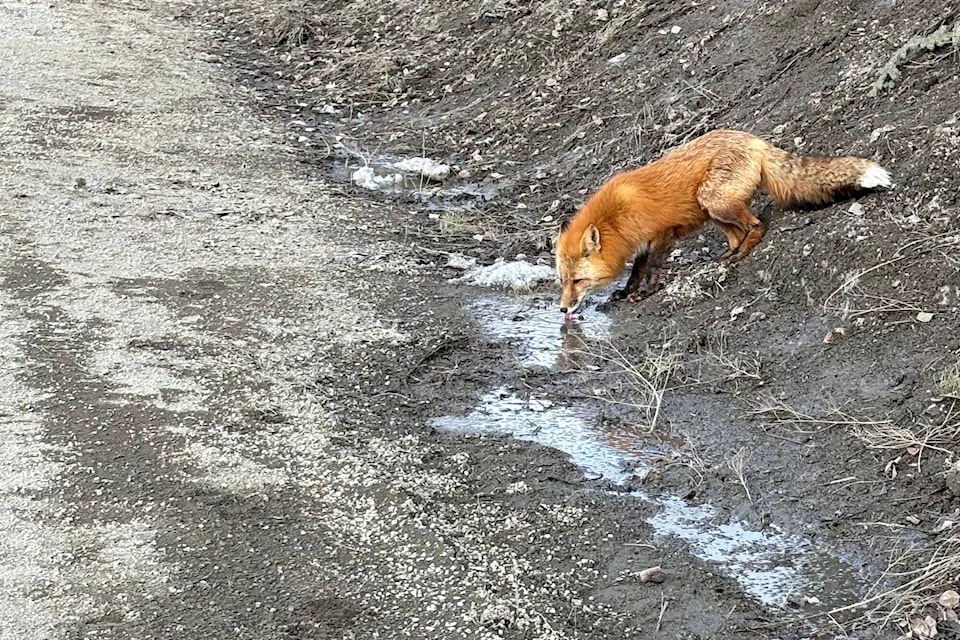Last week, after prolonged pressure from our U.S. and NATO allies, the federal government released its long-awaited update to Canada’s defence policy.
Our North, Strong and Free: A Renewed Vision for Canada’s Defence doesn’t actually mention the Yukon in its 36 pages, but it does include a much bigger focus on Arctic security in general than previous Canadian defence policies. This welcome development is tempered, however, by how back-ended the funding is. The headline total of $72 billion over the next 20 years translates into only $612 million next fiscal year and only $8 billion over the next five years.
The document recaps the reasons our allies and Canada are so concerned about the Arctic, namely climate change and increasing great power competition. Warming temperatures mean the Arctic Ocean “could become the most efficient shipping route between Europe and East Asia” by 2050. Meanwhile, our air force is seeing “more Russian activity in our air approaches,” and a “growing number of Chinese vessels and surveillance platforms are mapping and collecting data.”
Indeed, the new policy came out the same week our NATO allies were conducting a major military exercise from the Arctic to Eastern Europe. Operation Steadfast Defender includes 90,000 troops from 32 NATO countries, including Canada and new Arctic members Finland and Sweden.
The vision outlines four objectives for our new defence policy: asserting Canadian sovereignty, defending North America, advancing Canada’s global interests and values, and taking “a strategic approach to national security.”
This sounds good, but the Russians, Chinese and our American allies will be looking at Canada’s capabilities more than its stated intentions. This is why it is good that the document includes some hard numbers about new spending, even if most of it won’t happen until the 2030s.
A number of these new defence capabilities are particularly relevant to the Yukon, although it is likely the majority of the new spending will occur in Nunavut and the N.W.T. We, of course, are nestled right beside Alaska. This means we are under the protective wing of the major U.S. air bases at Fairbanks and Anchorage. The Americans are also reorganizing their army units in Alaska into a powerful new airborne division. The Alaskan units will be trained and equipped for Arctic warfighting, rather than just being conventional units that happen to be based in Alaska and are rotated through hotspots such as Iraq or Afghanistan.
The $72 billion over 20 years will go some way to addressing the shortfall in Canada’s commitment to the NATO target of spending two per cent of gross domestic product on defence. NATO says that two-thirds of our allies will meet this target in 2024. Even with the new funding, however, the new vision’s number will get us to only 1.76 per cent by 2030.
While not reaching our commitment, it is a significant improvement over past years. And the recent announcement is on top of last year’s plan for a significant two-decade-long upgrade to NORAD missile and air defence infrastructure.
The items of particular interest to Yukoners are new “Northern operational support hubs,” new helicopters and new Arctic surveillance systems.
The hubs will include “airstrips, logistics facilities and equipment and stockpiles of spare parts, [which] will enable the military to better assert Canadian sovereignty by establishing a greater year-round military presence across the Arctic and North.”
We don’t know where the hubs will be, but the $218 million in funding represents a good opportunity to build new infrastructure that supports both defence and economic needs. The feds commit in the paper to work with local stakeholders, including territorial and First Nations governments, while planning the hubs.
The tactical helicopters are an $18 billion investment. In addition to their classic defence role, they will also respond to natural disasters and emergencies. This capability will be very helpful in the event of a Yukon emergency. The navy will also “explore options” to enable their new Arctic patrol ships to include maritime helicopter capabilities, which would be useful off the Yukon’s Arctic coast.
The Arctic surveillance investments include a range of maritime sensors aimed at Russian and Chinese nuclear submarines as well as satellite infrastructure and early-warning aircraft. This is in addition to the 16 previously announced Poseidon ocean patrol aircraft.
The back-ended nature of the overall funding flows into specific programs too. Of the $218 million planned for the hubs over the next 20 years, only $2 million is planned for the first two years. Of the $18 billion for the helicopters, only 0.1 per cent of that will be spent in the next five years.
What the policy does not include are some of the more expensive options some analysts have recommended. For example, a beefed-up deep-water Arctic port, like the $800 million project the Americans are building at Nome, or a permanent deployment of airmobile infantry along the Alaskan model. Nor were new submarines announced, either diesel-powered or the nuclear models Australia is buying. We will continue to rely on the Americans in these areas.
The back-ended nature of the funding means that Yukoners will not notice much new in the next few years. But if future federal governments live up to the numbers in Our North, Strong and Free, we will eventually see a significant upgrade in the seriousness of Canada’s defence capabilities North of 60 degrees.
Keith Halliday is a Yukon economist and the winner of the 2022 Canadian Community Newspaper Award for Outstanding Columnist. His most recent book Moonshadows, a Yukon-noir thriller, is available in Yukon bookstores.
